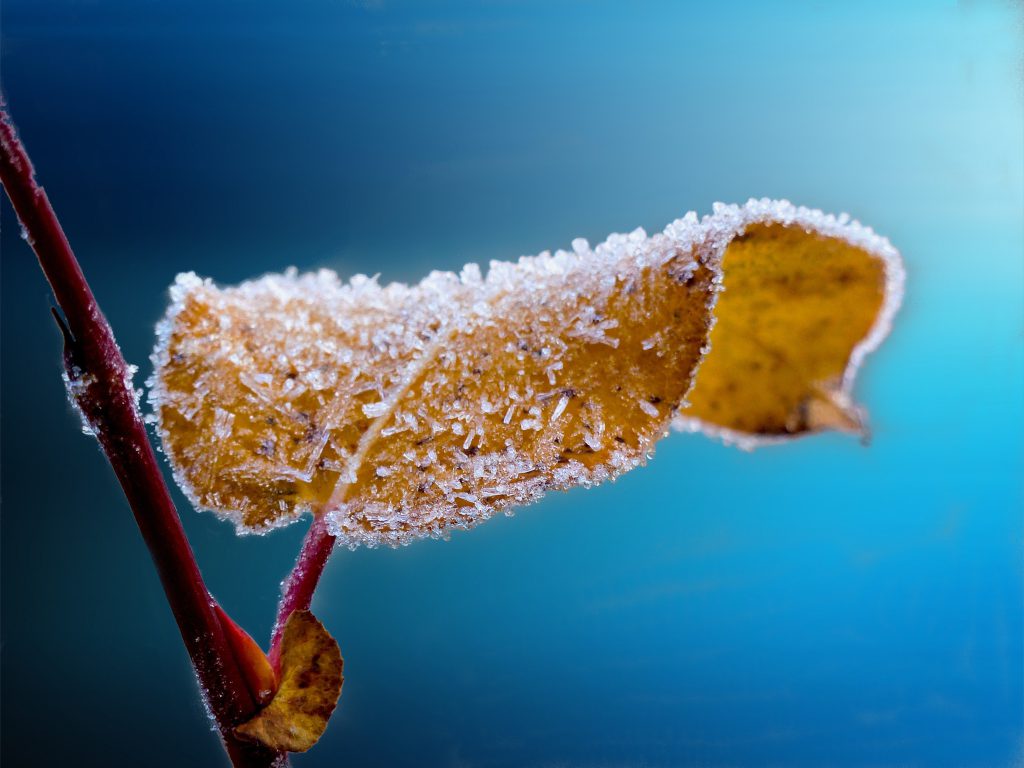Winter is Coming

Don’t hate me. I’m just the messenger. But it’s already October and there’s no stopping it. The best we can do is prepare. I don’t mean getting your furnace cleaned and your snowblower tuned up (although you should probably do that too). It’s time to get your garden ready for winter.
It is time for cleanup. Pull all your vegetables once you’ve harvested everything. The same for most annuals. They should be pulled out when done blooming, and the area cleared of debris.
Some, but not all, perennials should be cut back to prevent disease. Others can be left to provide food for birds, winter cover for bees and other pollinators, and something to break up the view of the expanse of white outside your window in February. Which ones should be cut? Anything that looks diseased should be cut back, as well as perennials prone to mildew or fungal disease. These include bee balm, tall garden phlox, peonies, hostas and bearded irises.
Trim your perennials back to about four to six inches above the soil. You can trim as low as two inches but leaving more will help you see where your perennials are next spring. It can come in handy with plants that emerge late, like balloon flower, Russian sage, and butterfly weed. More than once, I have tried to plant something in what I thought was a bare spot, only to find a forgotten plant nestled under the dirt!
Clematis should not be cut back in the fall but pruned in late winter/early spring or summer based on their type. See our blog post in Clematis for information on the types of clematis and when to prune them. Great flowers to leave in place over winter for birds and other pollinators are perennials such as asters, sedum, joe pye weed, agastache, coneflower, rudbeckia, and scabiosa, and annuals like cosmos, zinnias, and sunflowers.
The key to a great garden is healthy soil. One way to keep your soil in good condition is to keep your garden free of fallen leaves. Whole leaves form a thick mat when wet, which is the perfect environment for diseases you don’t want. Instead of leaving them there, rake them up, and run them over with your mower to use as a mulch for your lawn or garden.
Once everything is cut back and the garden clear of leaves and other debris, you may want to top dress your soil with about an inch of compost. Compost is nature’s plant food. It will keep your plants growing well and cut down on, or possibly eliminate, the need for any fertilizers next year. It is good to put it down in fall so perennials have access to those nutrients in early spring. You can even lay it right down over your bark mulch if you plan to add more bark to your bed in spring. Just work it in a little bit with a hoe after spreading it to keep it from blowing away. It will work its way down further into the soil on its own. You can of course, make your own compost, but you can also buy it. Pleasant Prairie Greenhouse carries bags of it.
Fall is also a great time to get your soil tested, to get a head start in spring. UW Extension offers soil testing services, which tell you the organic matter, phosphorus, potassium, and pH of your soil. They can also tell you what you need to do to improve it. Visit https://cdn.shopify.com/s/files/1/0145/8808/4272/files/A2166.pdf to learn more about soil testing.
Some perennials benefit from a layer of mulch to protect them from the winter cold. You can use the leaves you ran over with the mower earlier or use straw to mulch around tender perennials . Do not use hay, though. Hay contains seeds, and you will have a small hayfield of your own in your garden come spring. Lay mulch down after the first hard frost, keeping a ring of exposed soil around the plant to deter both rodents and disease.
Once you have done all of that, if you aren’t too exhausted, weed and, if fall continues to be dry, water. Yup. Keep weeding and watering until it freezes. You will have fewer weeds in the spring if you weed everything now, and this time of year, plant roots are still active and need water. Not as much as they did in August, but your roots will be stronger with the right amount of water.
Hopefully this will inspire you to get out there and enjoy the fall days in the garden and get off to a good start next spring. Winter may be coming, but it isn’t really that bad. Look on the bright side. It gives you time to think about what to plant next year
